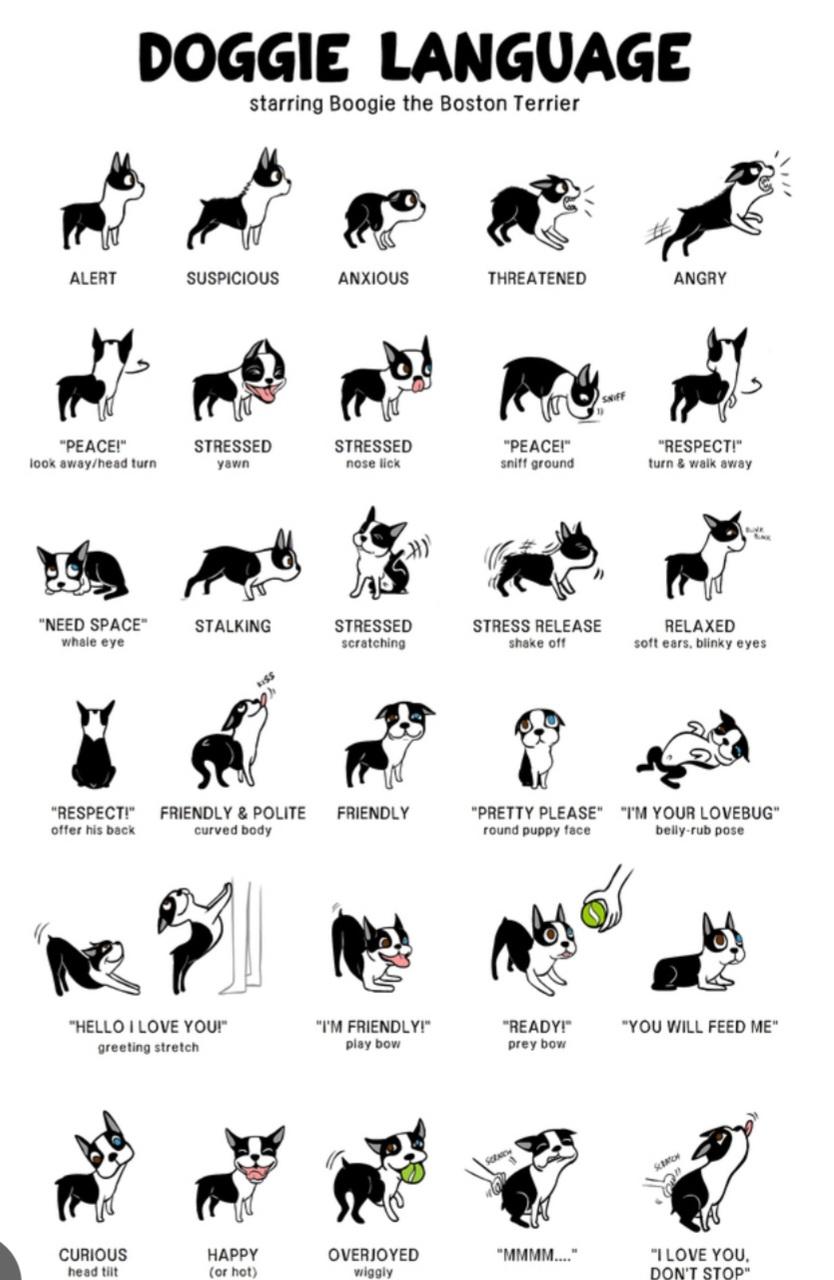Dogs communicate their feelings, needs, and wants through body language, which includes a variety of signs and cues:
Tail position: A fast wagging tail can indicate excitement or higher arousal, while a helicopter-style wag is usually a sign of happiness. A tail held low or tucked between the legs, with a slow and tentative wag, can indicate anxiety or fear.
Ears: Relaxed ears indicate a calm dog, while perked-up ears indicate alertness. Ears that go back and close can indicate appeasement, nervousness, or fear.
Mouth: A relaxed mouth with normal breathing indicates a calm dog.
Panting: Heavy panting can indicate overheating or intense stress.
Yawning: Yawning can indicate tiredness, or it can be a de-escalation behavior to signal that the dog is not a threat.
Snarling: A back teeth snarl is a defensive warning that indicates discomfort or a desire for personal space.
Raised hackles: Raised hackles are a sign that the dog is aroused.
Dogs use their entire bodies to communicate, including their eyes, ears, mouth, tail, and overall body movement. While dogs can learn words, most dogs can only learn a few dozen words.
Understanding your dog's body language can help you respond to them more quickly and help them navigate the world.

